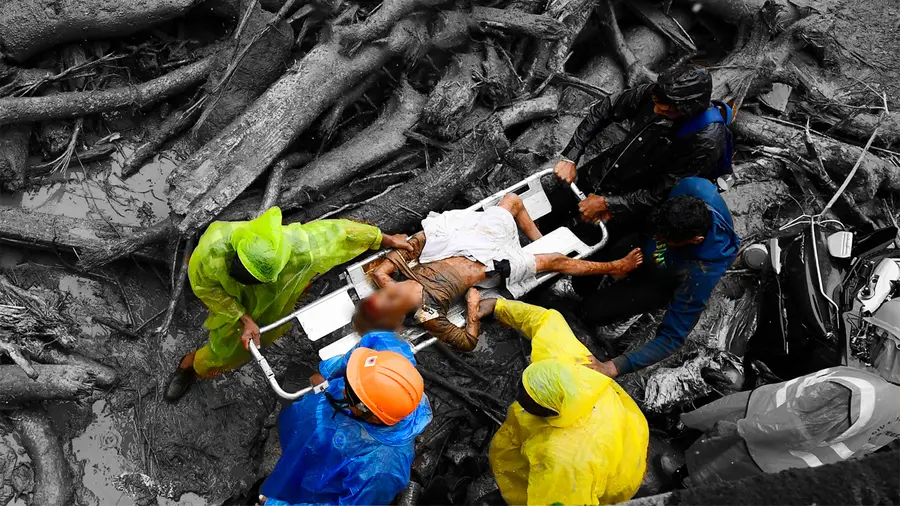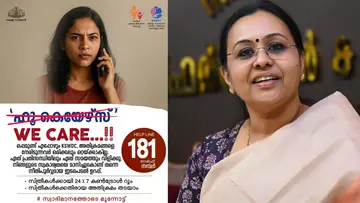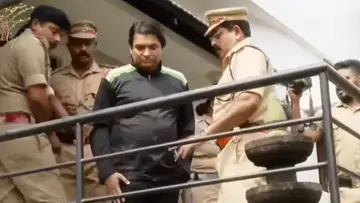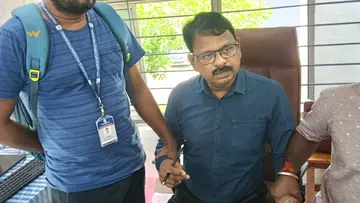Enviornment
A Battle for Reconstruction: Kerala's Struggle for Support After the Mundakkai-Chooralmala Landslide

Wayanad Landslide
Gopakumar Mukundan
Published on Feb 19, 2025, 01:46 PM | 6 min read
The Mundakkai-Chooralmala landslide in Wayanad District, Kerala, occurred in the early hours of August 30, 2024, claiming more than 300 lives and leaving hundreds of villagers homeless. The villages of Punjirimattom, Mundakkai, Chooralmala, and Vellarimala in Meppaadi grama panchayath were buried under heaps of sludge, logs, and soil due to the unprecedented debris flow, marking the largest recorded debris flow in the nation's history.
The Post Disaster Need Assessment Report (PDNA) highlights the severity of the loss and damages sustained. “The affected area, spread across multiple wards, experienced widespread damage across all categories of the social sector. Over 1,300 houses were completely destroyed, and nearly 111 cattle sheds required reconstruction. The destruction of educational institutions disrupted the education of more than 658 students. Public health facilities were also severely impacted, with growing concerns about the psychological toll on survivors”.
It is evident that the August 30 landslide devastated the lives and livelihoods of the villagers. The disaster was triggered by extreme rainfall in the crown region on August 29 and 30, which caused a rockslide and subsequent heavy landslides.
Well-coordinated rescue operations were swiftly carried out, rescuing and rehabilitating nearly 900 people from the affected areas. They were relocated to temporary shelters, rented independent houses, or places of their choice within less than thirty days. However, the challenge now lies in the recovery and reconstruction phase of disaster management.
According to the PDNA report, 1,300 houses were destroyed beyond repair, and another 500 to 700 houses sustained severe damage, rendering them uninhabitable. Modern understanding on disaster management emphasizes the importance of "building back better," a comprehensive and coordinated approach to restoring the lives and livelihoods of affected communities in a more resilient manner.
The Sendai Framework for Disaster Risk Reduction (SFDRR), the Sustainable Development Goals (SDGs) (2015-30), and the Paris Agreement on Climate Change—three international agreements to which India is a party—have reshaped the perspective on disaster management. The Disaster Management Act of 2005 also reflects this shift. As stated in the National Policy on Disaster Management, "There will be a paradigm shift, from the erstwhile relief-centric response to a proactive prevention, mitigation, and preparedness-driven approach for conserving developmental gains and minimizing loss of life, livelihood, and property." The National Disaster Management Plan (NDMP) outlines four components of disaster management: (1) Mitigation—prevention and risk reduction, (2) Preparedness, (3) Response and Relief, and (4) Recovery and reconstruction—immediate restoration and building back better.
Reconstruction-Whose Responsibility?
Mundakkai-Chooralmala is currently in the recovery and reconstruction phase. The PDNA, conducted as per national guidelines adopted under the UN framework, assessed the recovery and reconstruction cost at Rs. 2,221 crores. The State Government has requested this amount as an additional allocation from the recovery and reconstruction window of the National Disaster Response Fund (NDRF). However, this request has not been considered so far.
The question of reconstruction responsibility remains contentious. Union Government functionaries assert that disaster management responsibilities rest with State Governments. The Fifteenth Finance Commission report outlines the guiding principles for disaster financing, stating, "In all countries with a federal system, while it is the union or federal government which provides disaster assistance, the primary responsibility for disaster management rests with states." However, Union Government functionaries often omit the first part of this sentence to evade their financial responsibilities. Mundakkai-Chooralmala has been declared a Level 3 disaster, indicating its severe nature.
Typically, disaster management expenditures are met from the State Disaster Response Fund (SDRF), financed by the Union and State Governments in a 90:10 ratio. Union transfers to the SDRF are made as per the Finance Commission award, which is part of the devolution process. For the current year, the normal Union transfer to the SDRF is around Rs. 360 crores, intended to manage various disasters across the state.
Disasters of rare severity are financed separately from the NDRF, which is set up at the national level. The NDRF replenishes and reinforces State funds following specific guidelines in catastrophic events. During the Planning Commission era, additional assistance was provided as central assistance to State plans for contingency expenditures. However, with the discontinuation of the Planning Commission, no such mechanism exists to support States. The current mechanism for financing "build back better" initiatives is separate assistance from the NDRF.
The Kerala Government approached the Union Ministry of Home Affairs for additional assistance from the NDRF and Union budget allocations to cover rescue, rehabilitation, recovery, and reconstruction expenses related to the catastrophic landslides in Wayanad.
What did GOI offer, and what was the state's request?
The State Government requested separate assistance through three available windows at the Union Government's disposal. First, it sought assistance through a detailed memorandum for rescue and relief operations, assessing the actual loss at Rs. 1,202 crores and requesting Rs. 219 crores as per SDRF norms. However, no separate financial aid has been provided beyond the normal annual grant under the Finance Commission award. Notably, special grants were provided to other states like Andhra Pradesh, Telangana, Tamil Nadu, and Bihar from the NDRF even before detailed memorandums were submitted.
Second, the State Government sought Rs. 2,221 crores for reconstruction, including the building of two model townships with all public amenities, through the PDNA report. The Union Government, following Finance Commission recommendations, opened a separate recovery and reconstruction window with earmarked funds. However, in an affidavit before the Kerala High Court in a suo moto case, the Union Government stated that reconstruction responsibility lies with the State Government, which must finance the efforts independently. This stance contradicts the Finance Commission's recommendations.
Third, the State Government requested assistance from Union budget allocations under the Special Assistance to States for Capital Investment scheme to rebuild destroyed public assets and construct facilities as part of preparedness. Unlike the first two requests, this was not a grant but a fifty-year soft loan.
At the end of the fiscal year 2024-2025, the Union Government sanctioned Rs. 529.5 crores under this budget window (not part of the NDRF and not exclusively allocated for disaster management) with the condition that the funds must be expended within the current fiscal year. Thus, requests for special grants from the NDRF have been denied, and a loan with unrealistic conditions has been offered instead.
This approach underscores a persistent neglect of Kerala's needs, particularly in the aftermath of the Wayanad landslides. It starkly contrasts with the principles of federalism, where the central government is meant to support states based on their unique challenges.










0 comments